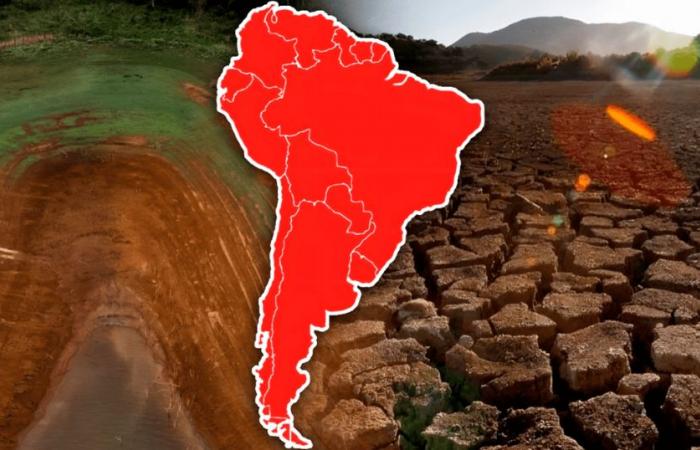
NASA details how global warming and extreme heat levels could seriously affect the habitability of that South American country. Photo: composition by Jazmin Ceras/La República/National Geographic
Climate change is a major concern today, and recent studies are discouraging. NASA has indicated that various regions, including parts of South America, China and the United States, could become uninhabitable by 2070. In particular, several areas of a South American country face an alarming future according to projections.
In its study titled “Too Hot to Handle: How Climate Change May Make Some Places Too Hot to Live,” NASA details how global warming and extreme levels of heat could severely impact the habitability of certain regions. The report focuses on the wet bulb index, an indicator that combines temperature and humidity to measure extreme heat that the human body can withstand. The conclusions are clear: without urgent measures, the outlook is bleak.
Several areas of the United States will suffer the consequences of climate change. Photo: Radio Sonora
Which country in South America would be uninhabitable by 2070?
Brazil, the largest nation in South America, faces a critical future due to global warming. According to NASA, some regions of Brazil could reach extremely dangerous levels of temperature and humidity by 2070, making them uninhabitable for humans. This phenomenon is the result of an increase in the levels of greenhouse gases which, without intervention, will continue to raise global temperatures.
The NASA report highlights that tropical and subtropical areas of Brazil are especially vulnerable. These regions already experience high temperatures, but the projected increase in humidity will exacerbate the problem. The combination of these factors can lead to situations where the human body cannot cool itself properly, increasing the risk of heat stroke and other health problems.
What will happen to some cities in China and the United States?
Eastern China and some areas of the United States are also on the list of regions that could become uninhabitable. In China, projections indicate that wet bulb temperatures could exceed 35 degrees Celsius, a critical threshold for human survival. Densely populated cities will face extreme conditions that will endanger the lives of millions of people.
In the United States, midwestern states such as Arkansas, Missouri and Iowa are at risk of reaching critical temperature and humidity limits in the next 50 years. These areas, known for their moderate climate, could experience drastic changes that would affect the health and well-being of their inhabitants. NASA emphasizes that no region is immune to climate change, and the United States is no exception.
Several areas of Brazil would be severely affected by global warming. Photo: CDN
What would happen in 2050, according to NASA?
By 2050, NASA projections indicate that several regions of the world could already be facing uninhabitable conditions. In particular, the nations of the South Asia, such as Pakistan and India, are at risk of severe heat waves and dangerous levels of humidity. These conditions will affect quality of life, but can also have devastating impacts on agriculture and the economy.
The Persian Gulf and Red Sea coastal areas are also in the crosshairs. High temperatures and high humidity in these regions could reach extreme levels, making them unsuitable for human life. The combination of heat and humidity in these areas is already a challenge, but projections for 2050 are even more alarming.
What are NASA’s warnings?
NASA is calling for urgent action. Reducing greenhouse gas emissions is crucial to mitigating the effects of climate change and preventing these projections from becoming reality. Scientists emphasize the need for immediate and effective measures to protect these regions and ensure habitability for future generations.
In addition to reducing emissions, it is essential to develop adaptation and resilience strategies. This includes improving infrastructure to withstand extreme conditions and educating the population about the risks and actions necessary to confront climate change. Only through a coordinated global effort can we hope to avoid the most catastrophic scenarios and protect our planet for the future.
The 5 keys: The only country in South America that would be uninhabitable in 2070
| Brazil Uninhabitable by 2070:NASA warns that Brazil could become uninhabitable due to extreme temperatures and humidity levels by 2070. |
| Wet Bulb Index: The report focuses on the wet bulb index, which combines temperature and humidity, indicating that certain regions will not allow cooling of the human body. |
| Other Affected Regions: Also mentioned are parts of eastern China and the midwestern United States that will face similar extreme conditions. |
| Global Impact: Climate change could make several regions of the world uninhabitable by 2050, affecting areas such as Pakistan, India and the Persian Gulf. |
| Call to ActionNASA urges reducing greenhouse gas emissions and developing adaptation strategies to mitigate these effects. |

